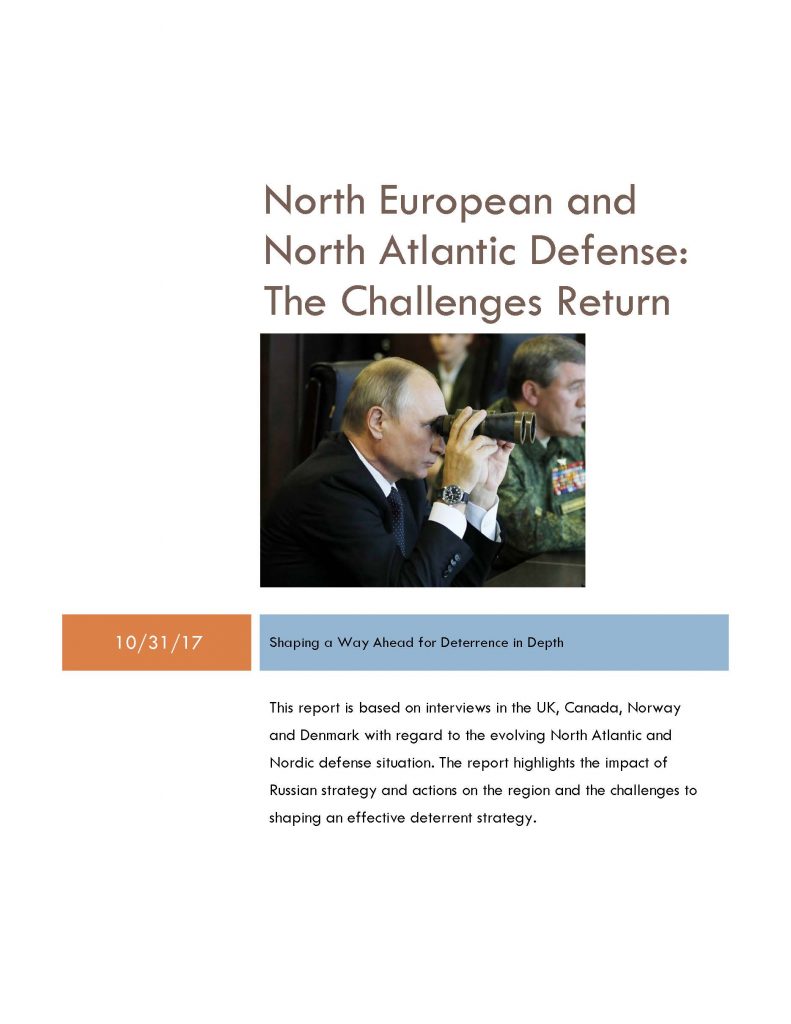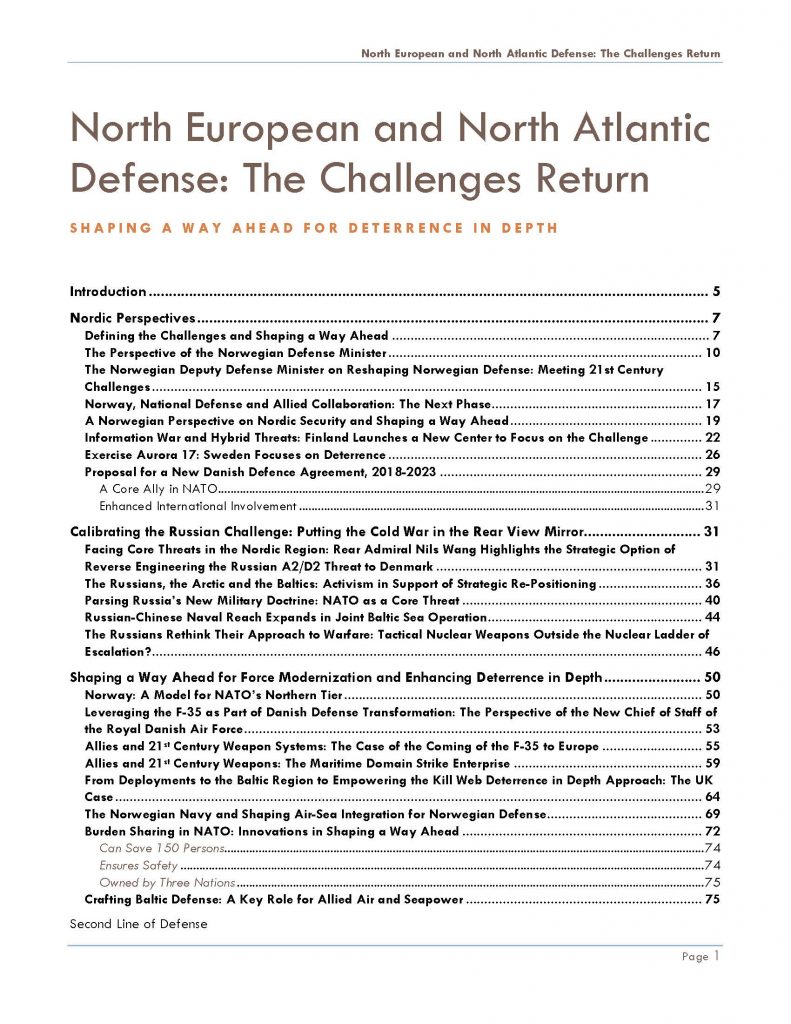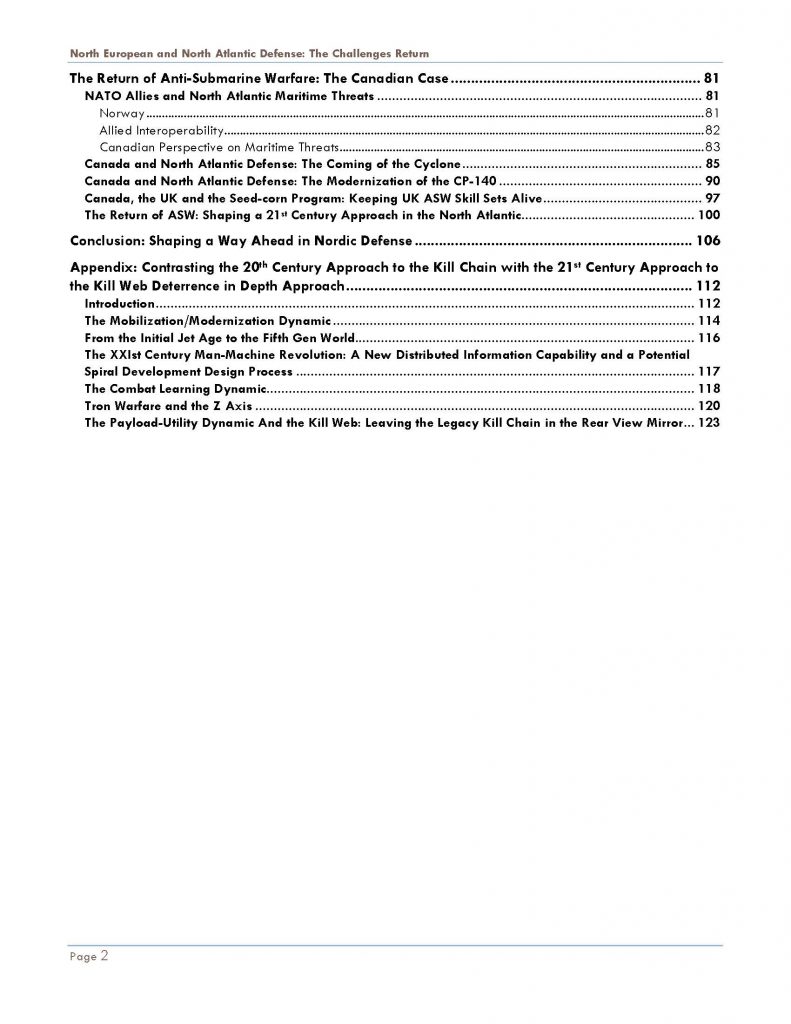2017-10-20 By Robbin Laird
The Nordics are responding to what they see as a new situation in their region.
The Arctic opening expands the range significantly of the challenge in what might be called the Nordic Security Zone (NSZNS) and the use of military power in Europe and beyond by the Russians has changed the defense environment of the post-Cold War period.
The Russians under Putin are clearly not the Soviets. They are not protecting their Empire in Eastern Europe; freed from this burden they can now pursue more narrowly considered policies in the perceived Russian interest.
This includes expanding Russian territory to include areas which the Russian leadership regards as inherently theirs, such as in the Crimea. And this includes as well expanding Russian geopolitical influence through insertion of force into the Middle East and strengthening Russian bases in the region.
The visits of the Israelis and Saudis to Moscow have highlighted ways in which the Russians are expanding their practical influence and shaping greater maneuvering room to achieved their designated objectives.
Under Putin, the Russian military has been downsized and modernized and with this modernization much greater integration if air and maritime power has been highlighted. Illustrative of the change is building a fleet of missile armed frigates operating in the Caspian Sea which are used to support Middle Eastern operations.
For the Nordics, the Russian dynamic creates a fluid NSZ from the Arctic through to the Baltics.

And in the heart of the NSZ is heavily armed Kaliningrad which is home to a significant missile and air defense force which given the Caspian example is part of a broader strategic capability to influence events within the NSZ.
As Jorge Benitez wrote in an article published on January 19, 2017:
The Russian exclave of Kaliningrad hosts significant military capabilities and lies between NATO members Poland and Lithuania. Over the years, the Russians have deployed so much firepower in this small territory deep inside NATO’s eastern borders that NATO’s former top military commander, retired Gen. Philip Breedlove, testified to Congress in February that Kaliningrad “is a very militarized piece of property … a fortress of A2AD [anti-access/area denial].”
Since then, the situation has gotten even worse. In addition to the advanced S-400 missiles with a 250-mile range already stationed in this area, in October the Russians deployed Iskander-M nuclear-capable ballistic missiles in Kaliningrad. These missiles have a range of more than 300 miles, which means they are capable of reaching six NATO capitals: Warsaw, Vilnius, Riga, Tallinn, Copenhagen, and Berlin. Also in October, the Russians announced that they deployed Bastion land-based coastal defense missile launchers in Kaliningrad. These supersonic missiles have a range of about 190 miles and cover the heart of the Baltic Sea, threatening maritime access to NATO’s Baltic members.
As if this arsenal of Russian missiles wasn’t cause enough for concern, Putin’s most recent act was to move two missile corvettes (the Serpukhov and the Zeleny Dol) from their base in the Black Sea to Kaliningrad. These Russian warships are equipped with Kalibr cruise missiles, which Putin used to demonstrate his ability to strike inside Syria from as far away as the Caspian Sea. In fact, the Kalibr missiles have a range of more than 900 miles and from Kaliningrad can reach most NATO capitals.
http://www.realclearworld.com/articles/2017/01/19/mr_trump_the_threat_from_kaliningrad_is_real.html
The Nordics have been playing close attention to the strategic shift in their region.
Norway and Denmark are putting in place modernization efforts and have reshaped their public discourse about the challenges in their region.
The Swedes have just concluded their first major military exercise in more than 20 years; and the Finns are working more closely with Nordics and allies for regional defense.
At the same time, the UK is in the throes of working out post-Brexit defense plans, and it is clear that Northern Europe will play a major role in shaping the way ahead. New aircraft are coming to the region – F-35s and P-8s, tankers and lifters – which will provide for enhanced capabilities to deal with challenge which Russia presents.
And the US and other NATO forces, such as Canada, which have major strategic interests in the region are working together to shape a more collaborative and nuanced force structure, to provide for deterrence in depth.
With the coming of the P-8s and Tritons, the return but in reality, transformation of ASW into a maritime domain awareness and strike enterprise is being shaped.
And Canada is contributing to this with a new helicopter and significant modifications of its legacy P-3s.
And the coming of the F-35 as a key coalition force could generate significantly greater collaborative integration to shape an offensive-defensive force necessary to be taken seriously by the Russians.
In this Special Report, we are looking at the evolution of Nordic thinking, the focus on force transformation to deal with the evolving Russian threat and challenge and posing some key questions about how best to shape the way ahead.
This Special Report picks up the threads of earlier reports, and lays the foundation for continuing work in addressing innovations in the region and how these innovations might inform the transformation of the forces of the liberal democracies in dealing with enhanced threats and challenges posed by the illiberal forces seeking to shape the evolving global order to their advantage.


Please enter your name and email below and you will then be able to download the report directly.
Oops! We could not locate your form.

